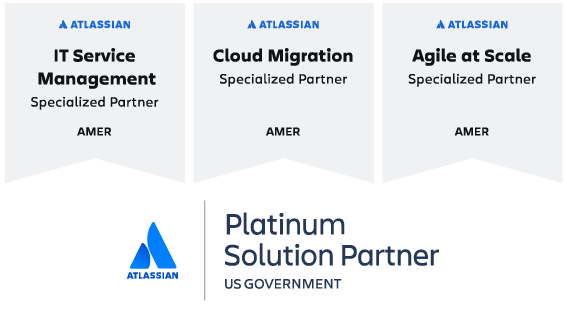 When it comes to project management tools for Fortune 1000 companies, the choice between Jira and MS Project can profoundly impact your organization's success.
When it comes to project management tools for Fortune 1000 companies, the choice between Jira and MS Project can profoundly impact your organization's success.
Jira's agile capabilities and collaborative features offer a distinct advantage in today's fast-paced business environment.
So, before making your next software investment decision, consider how Jira's unique functionalities can elevate your project management game to a new level of efficiency and effectiveness.
Key takeaways
- Jira's agile compatibility and customizable workflows cater to Fortune 1000 companies' dynamic needs.
- Real-time collaboration features in Jira enhance team efficiency and communication.
- Integration capabilities with popular tools like Confluence and Bitbucket streamline processes.
- Cost-effective solution with better ROI and scalability compared to MS Project.
- Jira's robust support and resources ensure smooth operations for large enterprises.
The evolving landscape of project management
Project management tools are essential in ensuring your projects' success
With the increasing adoption of Agile methodologies in large enterprises, the landscape of project management is rapidly evolving.
Understanding these shifts is key to staying competitive and delivering projects efficiently in today's dynamic business environment.
The importance of efficient project management tools
In the dynamic world of project management, having efficient tools at your disposal is essential for staying ahead in today's rapidly changing landscape. Utilizing top-tier project management software can significantly improve project success.
These tools streamline processes, enhance collaboration, and provide real-time insights into project progress. With features like task tracking, resource allocation, and customizable dashboards, efficient project management software empowers you to optimize workflows and make informed decisions swiftly.
The rise of Agile methodologies in large enterprises
In today's fast-paced business environment, large enterprises must adopt agile methodologies to manage increasingly complex projects and maintain a competitive edge.
Agile methodology, characterized by iterative development, adaptive planning, and quick responses to change, has gained significant traction in Fortune 1000 companies.
Unlike traditional project management approaches like the waterfall method, agile methodologies prioritize collaboration, customer feedback, and incremental value delivery.
Large enterprises recognize the benefits of agile methodologies in improving project outcomes, enhancing team efficiency, and fostering innovation. By breaking down projects into manageable tasks and focusing on delivering value in short cycles, agile methodologies help teams adapt swiftly to changing requirements.
This adaptability is essential in today's fast-paced business environment, where flexibility and responsiveness are key to success.
Incorporating agile methodologies into project management practices can increase customer satisfaction, reduce time to market, and increase team productivity.
As large enterprises navigate complex projects and aim to meet evolving customer needs, embracing agile methodologies is vital for driving success in today's competitive landscape.
What is Jira?
Jira is a robust project management tool that offers essential features tailored to streamline your project workflows.
With its integration capabilities, Jira allows you to connect with other tools, enhancing collaboration and productivity seamlessly.
Whether you're tracking tasks, managing timelines, or fostering communication among team members, Jira provides a complete solution for your project management needs.
Key features of Jira for project management
Jira's key features streamline project planning and execution, making it a versatile tool for project management. Here are some of the standout features that make Jira a top choice for project management tools:
- Customizable workflows: Tailor workflows to match your team's unique processes, ensuring efficient task management and clear progress tracking.
- Agile boards: Utilize Scrum or Kanban boards to visualize tasks, prioritize work, and adapt to changes quickly, fostering agile project management practices.
- Real-time collaboration: Real-time collaboration features enhance team communication and productivity, allowing team members to work together seamlessly.
- Advanced reporting: Customizable reports and dashboards provide valuable insights into project performance, enabling data-driven decision-making and project monitoring.
With these features, Jira empowers Fortune 1000 companies to effectively manage projects, increase productivity, and deliver successful outcomes.
Integration capabilities: Connecting with other tools
Jira's integration capabilities are one of the reasons it shines for Fortune 1000 companies. By effortlessly linking with popular tools like Confluence, Slack, Bitbucket, and Trello, Jira streamlines workflows and communication across teams.
This seamless connectivity allows real-time updates, smooth data sharing, and centralized project tracking. With Jira's robust integration capabilities, you can easily link tasks, documents, and discussions from different platforms, creating a cohesive project management ecosystem.
Whether you need to synchronize schedules, share progress updates, or streamline task assignments, Jira's integration features make it a versatile and powerful tool for Fortune 1000 companies.
By leveraging these integration capabilities, you can boost productivity, enhance collaboration, and ensure that all aspects of your projects are seamlessly connected for efficient and effective management.
What is MS Project?
MS Project is a project management software developed by Microsoft that offers core features such as task management, resource allocation, and timeline tracking. It's often used for traditional project management methodologies, making it suitable for waterfall projects and Gantt chart creation.
Unlike Jira's agile approach, MS Project focuses on more structured and sequential project management processes.
Core features of MS Project
Microsoft Project offers a range of core features that cater to the needs of project managers across Fortune 1000 companies:
- Work Breakdown Structure (WBS): Break down your project into manageable tasks and subtasks for better organization and tracking.
- Gantt chart: Visualize project timelines, dependencies, and progress through interactive Gantt charts that simplify project planning.
- Resource management: Efficiently allocate resources, assign tasks, and track resource utilization to optimize project performance.
- Reporting and analysis: Generate detailed reports, analyze project data, and gain insights to make informed decisions and improve project outcomes.
With these essential features, Microsoft Project empowers project managers to streamline their project workflows, enhance collaboration, and achieve successful project delivery in a structured and efficient manner.
Traditional project management vs. Agile approaches
Traditional project management and Agile approaches present distinct methodologies for managing projects efficiently and adapting to changing requirements.
Agile project management, a more flexible and iterative approach, focuses on delivering value to customers through continuous collaboration and adaptation. This methodology emphasizes individuals and interactions over processes and tools, responding to change over following a plan.
Agile methods like Scrum and Kanban break down projects into smaller, manageable tasks, promoting transparency and quick feedback loops for improved decision-making.
In contrast, traditional project management follows a linear, structured approach with detailed planning and defined roles. This method is often used for large-scale projects with fixed requirements and timelines. While it provides a clear roadmap from start to finish, it may struggle to accommodate changes effectively.
Fortune 1000 companies are increasingly embracing agile project management due to its ability to foster innovation, adaptability, and efficiency in today's fast-paced business environment. Organizations can choose the methodology that best aligns with their project goals and requirements by understanding the differences between traditional and agile approaches.
Comparative analysis: Jira vs. MS Project
When evaluating project management tools, Jira's dynamic features often outshine its competitor, Microsoft Project. Here are some key points highlighting why Jira is preferred over Microsoft Project:
- Agile compatibility: Jira is built to seamlessly integrate with Agile methodologies, allowing for flexible project management.
- Collaborative environment: Jira provides a platform where teams can easily communicate and collaborate on projects.
- Customization options: Jira offers extensive customization options, empowering users to tailor the tool to their specific project needs.
- Real-time updates: With Jira, users can enjoy real-time updates and visibility into project progress, enhancing overall transparency and efficiency.
These factors make Jira a robust project management tool, especially for Fortune 1000 companies looking to streamline their project workflows and maximize productivity.
User experience and interface
Regarding user experience and interface, Jira shines with its intuitive dashboard and extensive customization options, making task management a breeze.
On the other hand, MS Project offers a structured interface that provides clear organization but may feel a bit rigid for some users.
Understanding the benefits and drawbacks of each platform's interface is essential in determining which one best suits your project management needs.
Jira's intuitive dashboard and customization options
Jira surpasses MS Project in this aspect by offering a dynamic platform that caters to the unique needs of Fortune 1000 companies.
Here's how Jira's intuitive dashboard and customization options stand out:
- Personalized dashboards: Tailor your dashboard to display only the most relevant information, ensuring a clutter-free workspace.
- Drag-and-drop functionality: Easily reorder tasks, tickets, or projects with a simple drag-and-drop feature, streamlining your workflow.
- Customizable workflows: Create workflows that align with your company's processes, enhancing efficiency and collaboration among team members.
- Visual reporting: Generate interactive reports and charts to track progress and make data-driven decisions, improving project outcomes.
With these features, Jira empowers users to adapt the platform to their specific requirements, making project management more efficient and user-friendly.
MS Project's Structured Interface: Benefits and Drawbacks
Jira's user-friendly dashboard and customization options contrast with MS Project's structured interface, offering benefits and drawbacks for user experience and interface design.
MS Project's structured interface provides a clear and organized layout, making navigating through different tasks and timelines easier. The structured approach allows for a detailed breakdown of project components, aiding in tracking progress and managing dependencies effectively.
However, this rigid structure can sometimes feel overwhelming for users who prefer more flexibility and customization in their project management tools.
While MS Project's interface may appeal to those who thrive on order and precision, it may not suit individuals looking for a more dynamic and adaptable platform. Overall, the structured interface of MS Project can enhance productivity and clarity for those comfortable with its layout. Still, it may pose challenges for users seeking a more intuitive and customizable experience.
Flexibility and adaptability
When it comes to flexibility and adaptability, Jira shines with its seamless integration of Agile and Scrum frameworks. This allows you to easily tailor your project management approach to suit your needs.
In contrast, MS Project may present limitations in Agile environments, making it challenging to fully embrace Agile methodologies' iterative and collaborative nature.
Agile and Scrum frameworks in Jira
Incorporating Agile and Scrum frameworks within Jira increases flexibility and adaptability, enabling seamless project management in dynamic environments. Here's how Agile and Scrum frameworks in Jira enhance your project management experience:
- Sprint planning: Easily create and prioritize tasks for each sprint, promoting transparency and efficiency.
- Daily stand-ups: Conduct quick check-ins to track progress, identify roadblocks, and align the team.
- Backlog management: Streamline backlog grooming by organizing, prioritizing, and estimating user stories for improved workflow.
- Burndown charts: Visualize progress and identify bottlenecks through interactive burndown charts, facilitating data-driven decision-making.
Limitations of MS Project in Agile environments
Despite its capabilities in traditional project management, MS Project falls short in agile environments due to limitations in flexibility and adaptability. In agile methodologies, the ability to swiftly pivot, adjust priorities, and accommodate changes is vital for success.
MS Project's rigid structure and lack of real-time collaboration features hinder its effectiveness in agile settings—the software's linear and waterfall-focused approach conflicts with agile practices' iterative and collaborative nature.
Due to its complex interface and steep learning curve, MS Project can be challenging for agile teams seeking quick adaptation and seamless communication. Additionally, the software's dependency on manual updates and limited integration with agile tools further restrict its suitability for dynamic and rapidly changing projects.
Teams looking to embrace agile methodologies fully may find MS Project's limitations inhibiting their progress and hindering the team's ability to respond promptly to evolving project requirements.
Collaboration and communication
When considering collaboration and communication in Jira versus MS Project, it's essential to note Jira's real-time collaboration features that promote seamless teamwork.
However, questions arise about whether MS Project's communication tools offer enough functionality to support effective project communication.
These points highlight the significance of evaluating how each platform facilitates collaboration and communication within project teams.
Jira's real-time collaboration features
Jira's real-time collaboration features enable seamless communication and teamwork among project team members. With Jira, you can:
- Instant messaging: Chat with team members instantly, facilitating quick discussions and decision-making.
- Real-time editing: Collaborate on documents, spreadsheets, and project plans simultaneously with multiple team members.
- Task assignment: Easily assign tasks to specific team members, ensuring clarity on responsibilities and deadlines.
- Activity feeds: Stay updated on project progress, changes, and real-time discussions through activity feeds.
These features foster a dynamic and interactive environment where team collaboration flourishes effortlessly. Jira's emphasis on real-time collaboration enhances transparency, boosts productivity, and streamlines communication within your project team. Utilizing these capabilities can improve coordination, efficiency, and overall project success.
MS Project's communication tools: Are they enough?
MS Project offers communication tools that play a significant role in project management, but their effectiveness in fostering collaboration may require further evaluation. While MS Project provides features like task assignment notifications, Gantt chart sharing, and status updates, some users find these tools lacking in promoting real-time interaction and seamless communication among team members.
The communication tools in MS Project primarily focus on task progress tracking rather than facilitating dynamic discussions and brainstorming sessions, which are essential for successful project completion.
To enhance collaboration within your team, consider supplementing MS Project with additional communication platforms such as Slack, Microsoft Teams, or even email for more interactive and immediate exchanges. These external tools can bridge the gap that MS Project's communication tools left, enabling smoother information flow and better coordination among project stakeholders.
Reporting and analytics tools
Regarding reporting and analytics tools, Jira offers advanced reporting options that can provide you with detailed insights into your projects.
In comparison, MS Project has its reporting features, but weighing them against what Jira has to offer is essential.
Understanding the differences in their reporting capabilities can help you make informed decisions for your project management needs.
Advanced reporting options in Jira
Here's why advanced reporting options in Jira stand out:
- Customizable dashboards: Tailor your dashboards to display the metrics and KPIs most relevant to your project's success.
- Interactive charts and graphs: Visualize project data through interactive charts and graphs, making it easier to identify trends and patterns.
- Real-time reporting: Stay up-to-date with real-time reporting capabilities, ensuring you have the most current information.
- Advanced filtering and segmentation: Dive deep into your project data by utilizing advanced filtering and segmentation features, allowing you to analyze information from different angles.
These advanced reporting options in Jira empower you to make informed decisions and track your project's progress effectively.
MS Project reporting features: A comparison
Compare the reporting and analytics tools of MS Project with those of other project management software to evaluate their effectiveness. MS Project offers robust reporting features that allow users to track progress, manage resources, and analyze project data. It provides a variety of built-in templates and customizable reports to meet different project needs.
However, compared to other project management tools, MS Project may lack advanced analytics and visualization capabilities. While it excels in traditional project reporting, it may lack the agility and interactive features of more modern project management software like Jira.
In comparing project management tools, MS Project's reporting tools are known for their reliability and depth. Still, they mightn't offer the same real-time collaboration and dynamic reporting level as newer tools. For Fortune 1000 companies looking to stay ahead in today's fast-paced business environment, exploring alternative project management solutions with more advanced reporting and analytics features could be beneficial.
Benefits of choosing Jira for Fortune 1000 companies
Choosing Jira over MS Project can significantly streamline project management processes for Fortune 1000 companies. Here are the benefits of choosing Jira:
- Agile project management: Jira's agile framework allows for better adaptation to changing project requirements.
- Enhanced collaboration: Jira's real-time communication features foster collaboration among team members.
- Customizable workflows: Tailor workflows in Jira to match your company's unique project management processes.
- Integration capabilities: Seamlessly integrate Jira with tools like Confluence, Bitbucket, and more for a thorough project management ecosystem.
Streamlined operations with Jira
With Jira, you can enhance team collaboration and productivity effortlessly.
Its seamless integration with DevOps tools guarantees streamlined workflows for your projects.
Let Jira help you optimize your operations for maximum efficiency.
Enhancing team collaboration and productivity
Boost team collaboration and productivity effortlessly with Jira's streamlined operations, maximizing efficiency in project management. By leveraging Jira, your team can achieve seamless collaboration and enhanced productivity through:
- Real-time communication: Utilize Jira's built-in messaging and commenting features to keep all team members informed and engaged.
- Task assignment: Assign tasks easily, clearly outlining responsibilities and deadlines for each team member.
- Visibility and transparency: Gain a thorough overview of project progress, allowing for better decision-making and resource allocation.
- Collaborative workflows: Create custom workflows that suit your team's unique processes, promoting collaboration and synergy among team members.
With these collaborative features, Jira empowers your team to work together efficiently, stay organized, and achieve project goals with precision.
Say goodbye to siloed work and hello to a more cohesive and productive team environment.
Integration with DevOps tools for seamless workflows
Effortlessly integrate Jira with DevOps tools to create seamless workflows that enhance operational efficiency and collaboration within your team. By integrating Jira with DevOps tools like Jenkins, Bitbucket, and Docker, you can streamline your development processes and guarantee smooth coordination between development, operations, and quality assurance teams. This integration allows for real-time updates, automated build and deployment processes, and improved visibility into project statuses.
Consider the following table showcasing the benefits of integrating Jira with DevOps tools:
| DevOps Tools | Integration Benefits | Impact on Workflows |
| Jenkins | Automated Testing | Faster Release Cycles |
| Bitbucket | Code Version Control | Enhanced Collaboration |
| Docker | Containerization | Consistent Environments |
Integrating Jira with these DevOps tools enhances communication and transparency and empowers your team to deliver high-quality products efficiently. Utilizing these tools with Jira allows you to optimize your workflows and achieve tremendous project success.
Cost-effectiveness and ROI
When considering cost-effectiveness and ROI, considering the long-term value of choosing Jira over MS Project is essential. Evaluating the total cost of ownership (TCO) between the two can help you make an informed decision that aligns with your budget and goals.
Understanding these financial aspects will highlight why Jira stands out as a more cost-effective and rewarding option for project management.
Long-term value of choosing Jira
Due to its streamlined processes and versatile functionalities, choosing Jira over MS Project can lead to substantial long-term cost savings and higher return on investment. With Jira, you can enjoy:
- Lower Total Cost of Ownership: Jira's flexible pricing options and efficient workflow management help reduce overall expenses.
- Enhanced collaboration: Jira's collaborative features foster teamwork and boost productivity, resulting in quicker project completion.
- Scalability and adaptability: Jira's ability to scale with your business and adapt to changing needs guarantees long-term relevance and value.
- Integrated ecosystem: Jira integrates with many tools and applications, providing your team with a cohesive project management experience.
Evaluating Total Cost of Ownership (TCO) vs. MS Project
To determine the cost-effectiveness and return on investment of choosing Jira over MS Project, assessing the total cost of ownership (TCO) becomes imperative.
When comparing TCO between Jira and MS Project, Jira typically offers a more cost-effective solution for Fortune 1000 companies. While MS Project may have a lower initial license cost, the additional expenses associated with customization, maintenance, and integrations often lead to a higher overall TCO.
On the other hand, Jira provides a more streamlined and flexible platform that can adapt to changing project needs without incurring substantial extra costs. Due to its scalability, ease of use, and lower total cost of ownership compared to MS Project, companies can experience a better ROI by opting for Jira.
Considering the long-term financial implications, choosing Jira over MS Project can result in significant cost savings and improved efficiency for Fortune 1000 companies.
Support and resources
Regarding support and resources, Jira shines with its robust community and learning materials, which make finding solutions and expanding your knowledge easier.
Additionally, Jira offers professional support and training options, ensuring you can access assistance when needed.
With these resources, you can navigate Jira with confidence and maximize its potential for your projects.
Access to Jira's robust community and learning resources
Explore Jira's vibrant community and extensive learning resources for unparalleled support and guidance in maximizing your project management potential. Joining the Jira community opens doors to knowledge and collaboration opportunities. Here's what you can expect:
- Interactive Forums: Engage with other Jira users, share best practices, and seek advice on effectively maneuvering the platform's features.
- Atlassian User Groups: Connect with like-minded professionals in your industry through local or virtual meetups organized by Atlassian.
- T5 Webinars: Participate in informative webinars hosted by top Jira experts to deepen your understanding of advanced project management techniques.
- Jira Knowledge Base: Access a rich library of articles, tutorials, and FAQs to troubleshoot issues and enhance your skills with Jira's powerful tools.
Availability of professional support and training
Engage with professional support to enhance your mastery of Jira's project management tools. Accessing professional support guarantees that you have expert guidance at your fingertips, ready to assist you in handling any challenges.
Jira offers robust training resources, including online courses, webinars, and certifications, all designed to equip you with the skills needed to maximize your project management efficiency. By tapping into these resources, you can effectively elevate your understanding of Jira's capabilities and streamline your project workflows.
Professional support also provides personalized assistance tailored to your specific needs. Whether you require troubleshooting guidance, best practice recommendations, or in-depth training sessions, Jira's professional support team is there to help you every step of the way.
Leveraging these resources empowers you to utilize Jira to its full potential, driving success in your project management endeavors.
Why Jira is superior
In conclusion, Jira is the superior project management tool over MS Project due to its user-friendly interface and agile capabilities.
When considering a project management tool for your Fortune 1000 company, here's why Jira is the top choice:
- User-friendly interface: Jira offers an intuitive and visually appealing interface that simplifies project management tasks.
- Agile capabilities: Jira allows you to quickly implement agile methodologies, enhancing your team's efficiency and adaptability.
- Collaboration features: Jira promotes collaboration among team members, fostering communication and teamwork.
- Customization options: Jira allows extensive customization to tailor the tool to your company's needs.
The future of project management is Agile
The future of project management is agile, and Jira is the preferred choice for tech-savvy leaders looking to streamline their processes efficiently.
Embracing change from MS Project to Jira is vital in adapting to the dynamic nature of modern project management. Making the shift empowers teams to collaborate effectively, stay organized, and deliver results more promptly.
Why Jira is the preferred choice for tech-savvy leaders
Tech-savvy leaders increasingly turn to Jira over MS Project in project management due to its agile approach and advanced collaboration features. Jira is the preferred choice for forward-thinking professionals seeking efficient project management solutions. Here's why tech-savvy leaders favor Jira:
- Agile methodology: Jira's agile framework allows for iterative and adaptive project management strategies.
- Real-time collaboration: Seamless communication and collaboration features enhance team productivity.
- Customizable workflows: Tailor workflows to fit your team's unique needs and processes.
- Integration capabilities: Easily integrates with various tools and platforms for a streamlined workflow.
With Jira, tech-savvy leaders can easily navigate the complexities of modern project management, staying ahead of the curve in an ever-evolving business landscape.
Embracing change: The transition from MS Project to Jira
Embracing change from MS Project to Jira signifies a pivotal shift towards agile project management methodologies in the evolving landscape of project management. As Fortune 1000 companies adapt to the dynamic market demands, switching to Jira from MS Project becomes essential for staying competitive and enhancing project efficiency. Atlassian's Jira offers a robust platform that streamlines project workflows, fosters collaboration and promotes team transparency. With this transformation, it's common to have questions about the migration process, train employees on Jira, and integrate Jira with existing systems. Addressing these queries directly is vital to guarantee a smooth and successful shift towards agile project management.
Leveraging Jira's T5 capabilities empowers organizations to embrace change confidently and drive innovation within their project management practices.
Sign up to receive more great content
Learn more about Atlassian and how Isos can help by signing up to receive our latest blogs, eBooks, whitepapers and more.














